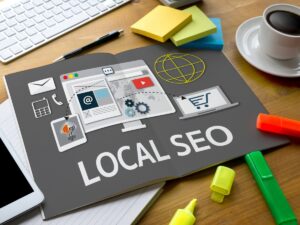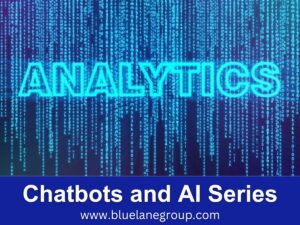This guide offers a comprehensive look at chatbot development services, highlighting their transformative impact on businesses, enhancing customer interactions, and streamlining operational efficiencies. We will touch upon the intricate process, various platforms, and the importance of choosing the exemplary development service for specific business needs in our increasingly digital-first world.
Quick Overview – For the Forward-Thinking Reader:
- Chatbot development services encompass a range of solutions tailored to create intelligent and responsive chatbots. These services cover chatbot design, creation, implementation, and maintenance across various platforms and industries. By leveraging the expertise of chatbot developers, businesses can create bespoke chatbot experiences that resonate with their target audience, resulting in improved engagement, lead generation, and customer support.
- In the digital landscape, chatbots have risen from mere novelty to necessity. By tapping into top-tier chatbot development services, businesses enhance customer engagement and position themselves at the forefront of innovation. Partnering with exemplary service ensures that the chatbots are functional and aligned with the brand’s ethos, mission, and customer expectations. It’s an investment in the future of business communication and customer relationship management.
Welcome to the eighteenth Blue Lane Group article in the Best Chatbots for Customer Service: Blueprint for Success in 2023 series. These posts examine the essential chatbot topics of customer service automation, exploring how chatbots revolutionize interactions, enhance user satisfaction, and redefine the benchmarks for excellence in modern customer-centric businesses.
Disclosure: The digital products mentioned in this article are highly regarded in the marketplace and are endorsed by the Blue Lane Group staff. We may earn a commission at no additional cost if you purchase through the provided links.
Table of Contents

Introduction: The Evolution and Importance of Chatbot Development Services
The digital landscape has witnessed a phenomenal transformation over the past decade, with chatbots emerging as a crucial component of this shift. Chatbot development services have evolved exponentially from simple menu-driven bots to AI-powered conversational assistants.
Regardless of size or sector, businesses recognize chatbots’ unparalleled advantages, from enhanced customer engagement to cost-efficient support mechanisms. With platforms like Azure Bot Service by Microsoft providing seamless scalability and advanced functionalities, it’s no wonder that the importance of investing in chatbot development services is more pronounced than ever.
Chatbot Fundamentals: Key Concepts and Types
At their core, chatbots are automated software programs designed to simulate human conversation. These digital assistants can be integrated into websites, messaging apps, or social media platforms, catering to diverse user needs. Two primary classifications dominate the chatbot domain:
- Rule-Based Chatbots: These operate based on pre-defined rules and scripts. They can’t handle queries beyond their programmed information, but platforms like Botpress allow businesses to create sophisticated rule-based bots without extensive coding.
- AI-Driven Chatbots: Leveraging technologies like machine learning and natural language processing, these bots can learn from user interactions. Platforms like Dialogflow by Google make the development of AI-driven chatbots intuitive and efficient.

Understanding Chatbot Architecture and Design
The architecture and design of a chatbot determine its efficiency and usability. The foundational layer consists of the platform hosted by the chatbot, which can range from cloud solutions like Azure Bot Service by Microsoft to specific chatbot development environments like Gupshup. On top of this, the Natural Language Understanding (NLU) component deciphers user input, which AI algorithms then process to generate appropriate responses.
The design also involves crafting the user experience. With platforms like Chatfuel and MobileMonkey, businesses can design bots dedicated to specific platforms like Facebook Messenger, ensuring seamless user engagement.
Differentiating Between Conversational & Menu-driven Bots
- Conversational Bots: These chatbots leverage AI and NLU to engage in free-flowing dialogues with users. Platforms like Dialogflow by Google and IBM Watson Assistant provide the tools to craft interactive bots that dynamically understand and respond to user queries.
- Menu-driven Bots: These bots operate based on pre-set menus and choices, guiding users through a structured interaction. They’re more predictable and straightforward, ideal for specific tasks or information retrieval. Creating menu-driven bots becomes hassle-free with the drag-and-drop interface provided by platforms like Botsify.
Understanding these distinctions is pivotal as businesses strategize their chatbot deployments, ensuring they choose the right type to align with their objectives and user expectations.
Multi-language Chatbot Development: Why It Matters
In today’s globalized digital ecosystem, businesses interact with diverse audiences spanning multiple geographies and languages. Multi-language chatbot development has become vital to cater to this vast demographic.
With tools like Dialogflow by Google, businesses can seamlessly create chatbots proficient in multiple languages. This broadens the user base and enhances user experience, ensuring clear and contextual interactions irrespective of language barriers. Multi-language support can significantly boost customer engagement, ensuring businesses don’t lose potential customers due to language constraints.

Advancing with AI: A Deep Dive into Chatbot Technologies
Artificial Intelligence (AI) has been the driving force behind the most advanced chatbot functionalities. Platforms like IBM Watson Assistant and Meya leverage AI to facilitate dynamic and interactive chatbot conversations. AI-driven chatbots can learn from user interactions, predict user needs, and provide personalized responses.
Moreover, with continuous advancements in machine learning, these chatbots improve over time, making them more efficient and attuned to user needs. AI doesn’t just enhance chatbot response mechanisms and aids in sentiment analysis, ensuring chatbots can gauge user emotions and respond accordingly.
Natural Language Processing (NLP) in Chatbots
At the heart of every conversational AI chatbot lies Natural Language Processing (NLP). It is the technology that enables chatbots to understand, interpret, and generate human language. With platforms like Wit.ai and Dialogflow by Google, chatbots can decipher vast amounts of natural language, making chatbot-human interactions more intuitive and effective.
NLP breaks down user input into understandable components, allowing the chatbot to respond appropriately. This ensures that chatbots can handle varied user queries, from simple questions to complex requests, with ease and precision.
Conditional Response Programming: Creating Contextual Interactions
For a chatbot to truly resonate with users, it must generate contextual and relevant responses. This is where conditional response programming comes into play. Using platforms like Botpress and ChatterOn, developers can craft chatbot interactions based on specific user inputs, ensuring the chatbot’s responses are always in context.
For instance, a chatbot can be programmed to offer product recommendations based on a user’s past purchases or inquiries. This form of dynamic interaction not only enhances user experience but also drives user engagement, making chatbot interactions more meaningful and productive.
Superbots vs. Concierge Bots: Making the Right Choice
Two prominent types have emerged in chatbot development: Superbots and Concierge Bots. Superbots, often powered by platforms like IBM Watson Assistant, are designed to perform many tasks, from answering FAQs to handling complex transactions.
Their versatility is their strength, and they are best suited for platforms where diverse user inquiries are expected. On the other hand, Concierge Bots are specialized chatbots tailored for a specific purpose or task. Tools such as Meya can be instrumental in developing these task-focused bots. Concierge Bots excel in providing streamlined, expert solutions in their domain, be it hotel reservations or tech support.
When deciding between the two, businesses must evaluate their primary chatbot objective: breadth of function or depth of expertise.
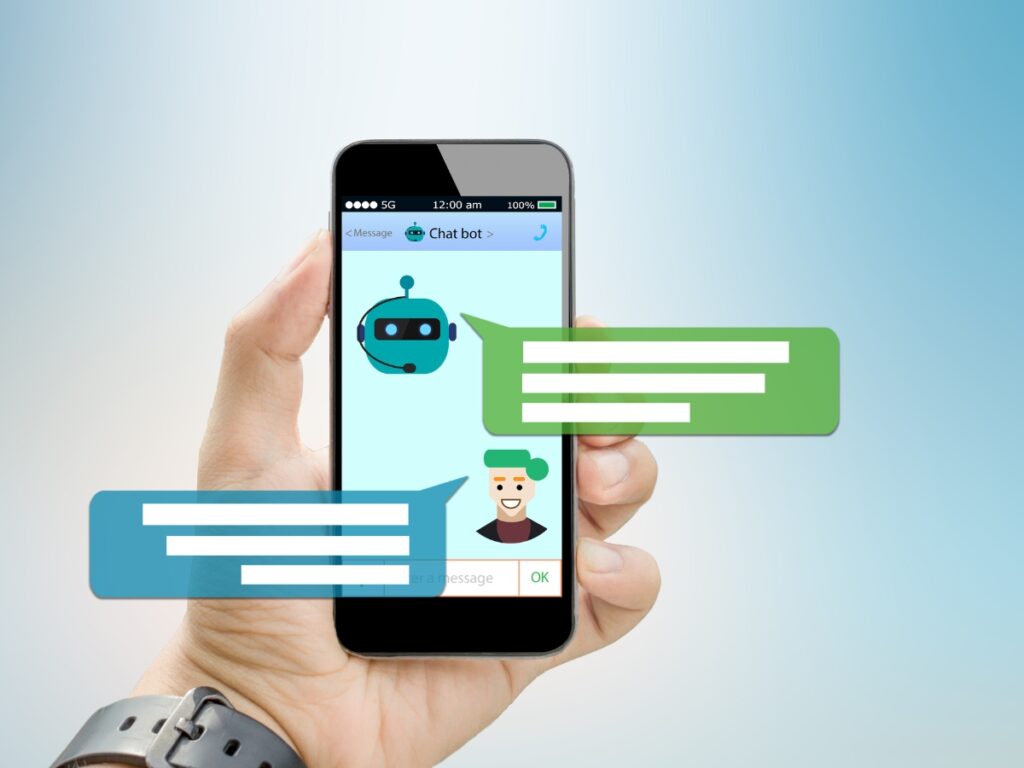
The Development Process: From Consultation to Support
Embarking on the chatbot development journey involves multiple stages, beginning with consultation and culminating in continuous support. Initially, platforms like Chatfuel and MobileMonkey offer consultation services, helping businesses identify their chatbot needs and outlining a development blueprint.
Once the development phase commences, platforms like Botpress and Pandorabots allow for a seamless creation process, integrating features like NLP and multi-language support. But the journey doesn’t end post-deployment; it merely shifts to the maintenance phase.
What to Expect During Chatbot Consultation
Chatbot consultation is the foundational phase where businesses lay down their chatbot objectives and requirements. Utilizing platforms like Dialogflow by Google, consultation sessions explore the chatbot’s potential functionalities, target audience, and integration needs.
During these sessions, decisions regarding AI implementation, multi-language support, or the choice between a Superbot and a Concierge Bot are made. The consultation phase ensures the chatbot aligns perfectly with the business’s goals and user expectations.
Importance of Continuous Chatbot Maintenance and Support
Post-deployment, the focus shifts to ensuring the chatbot operates efficiently and remains updated with the latest trends and user demands. Platforms like Gupshup provide tools for continuous chatbot maintenance, from correcting response databases to refining AI learning models.
Moreover, support services, often facilitated by Wit.ai and Flow XO, ensure that any glitches, user issues, or integration challenges are addressed promptly. Continuous maintenance and unwavering support provide the chatbot’s optimal performance and play a crucial role in enhancing user trust and satisfaction.

Integrations and Platforms: Amplifying Chatbot Capabilities
The prowess of a chatbot is not just determined by its stand-alone functionalities but also by its ability to integrate seamlessly with various platforms and tools. Such integrations amplify a chatbot’s capabilities, making it more dynamic, responsive, and user-friendly.
Leveraging suitable media can significantly elevate the chatbot experience, ensuring businesses efficiently cater to diverse user needs and preferences.
Custom Integrations for Enhanced User Experience
Tailoring chatbot functionalities to cater to specific business requirements can make all the difference in enhancing user experience. With platforms like Azure Bot Service by Microsoft, businesses can ensure seamless scalability and advanced functionalities.
Additionally, Dialogflow by Google offers a deep understanding of natural language, enabling chatbots to process and interact more humanistically. For those looking for AI-driven capabilities and continuous improvement, IBM Watson Assistant stands out as a comprehensive solution, integrating seamlessly and providing tools for in-depth chatbot analysis.

Building Bots for Different Messaging Channels
As chatbot adoption grows, so does the need to deploy these bots across various messaging channels. Tools like Chatfuel excel in creating bots tailored for Facebook Messenger, driving customer engagement, and facilitating automated responses.
Meanwhile, MobileMonkey emphasizes omnichannel capabilities, ensuring that the chatbot’s presence is felt across different messaging platforms, from WhatsApp to Slack.
Ensuring Omnichannel Presence: Website to Social Media
In today’s interconnected digital world, having a presence across multiple platforms is not a luxury but a necessity. This omnichannel presence ensures that businesses reach their audience wherever they are. With Botsify, companies can effortlessly integrate their chatbots into websites, offering real-time interactions to visitors.
On the other hand, Gupshup provides comprehensive solutions for chatbot deployment across various social media platforms, ensuring consistent user experiences and amplifying brand reach.

Choosing the Right Tools: An Overview of Leading Platforms
In the expansive realm of chatbot development, choosing the right tools can significantly influence the outcome, shaping the overall user experience and business benefits.
The platforms offer businesses myriad choices, each offering unique features and advantages. One can harness the full potential of chatbot technology by understanding the nuances of these platforms and aligning them with specific business needs.
Open-Source Solutions for Customization
Open-source platforms offer flexibility, allowing developers to tweak and customize chatbots based on unique requirements. Botpress stands out in this domain, providing an extensible and customizable bot creation tool that aids businesses in sculpting sophisticated bots without the complexities of coding.
Rasa brings the power of machine learning to chatbot development, offering a framework that allows for crafting contextual AI assistants. Meanwhile, Pandorabots focuses on creating bots that can emulate human-like interactions, ensuring that users experience natural and engaging conversations.
Drag-and-Drop Platforms for Quick Development
Drag-and-drop platforms rescue businesses aiming for rapid chatbot deployment without delving deep into the technicalities. ChatterOn offers a streamlined approach, enabling swift chatbot development with minimal coding.
It empowers businesses with efficient solutions that can be rolled out quickly. Similarly, Tars provides a no-coding platform, aiding companies in crafting efficient chatbots without needing technical expertise, making the development process smooth and hassle-free.
AI-Driven Platforms for Advanced Interactions
Incorporating AI into chatbots elevates their capabilities, enabling them to understand and respond with increased accuracy and context. Meya provides businesses with a platform that focuses on AI-driven chatbots, ensuring enhanced customer experience by leveraging the nuances of natural language processing and machine learning.
On the other hand, Wit.ai specializes in voice and text interfaces for applications, making it an ideal choice for businesses aiming to provide interactive and intuitive chatbot experiences across different platforms and devices.

The 7 Must-Knows to Boost Your ROI with Chatbot Development Services
Integrating chatbots into a business’s digital strategy involves technological advancement and ensuring a return on investment (ROI). To truly reap the benefits and optimize ROI, companies must know several crucial factors influencing chatbot success.
1. Importance of Platform Selection for ROI (Product mention: Botpress, Gupshup)
The choice of platform plays a pivotal role in determining the success of a chatbot. Selecting an appropriate outlet that aligns with a business’s goals and target audience can significantly impact user engagement and overall ROI.
For instance, Botpress offers an open-source solution allowing companies to customize and create bots that resonate with their needs. On the other hand, Gupshup provides a comprehensive environment for chatbot development, from building to monitoring, ensuring that businesses can foster automated customer interactions efficiently. The right platform can elevate user experience and streamline backend processes, leading to higher ROI.
2. Enhancing User Experience through AI-driven Chatbots
The power of AI in chatbot development cannot be overstated. AI-driven chatbots can understand and respond to user queries with greater context and accuracy. Instead of providing generic responses, these chatbots can engage in meaningful conversations, adapt to user preferences, and learn from past interactions.
This personalized approach fosters increased user satisfaction, leading to longer engagement times, more frequent exchanges, and higher ROI. Businesses should invest in platforms and tools that leverage the latest AI technologies to ensure their chatbots are intelligent, adaptive, and responsive.
3. Seamless Integrations and Their Impact on Customer Retention
To be truly effective, a chatbot must be integrated seamlessly into a business’s systems, such as CRM, databases, and e-commerce platforms. Seamless integrations ensure the chatbot can access and utilize vital information in real-time, providing users with accurate and timely responses.
Moreover, by integrating chatbots into familiar platforms that customers use, businesses can offer a unified and consistent user experience. This continuity in user experience can significantly boost customer retention rates, as users are more likely to return to platforms that offer smooth and integrated interactions.

4. The Role of Continuous Updates in Maximizing ROI
Chatbots, like all digital solutions, are not a one-time setup. The digital landscape and user preferences and behaviors are continuously evolving. A chatbot must be updated regularly to remain relevant and practical. This involves updating the content and responses and integrating new features, functionalities, and technologies.
Continuous updates based on user feedback and analytics can significantly enhance the user experience, leading to increased engagement and loyalty. Businesses can dramatically improve their ROI by staying ahead of the curve and ensuring their chatbot meets current standards and user expectations.
5. Value of Multi-language and NLP for Global Outreach
In today’s globalized world, businesses often cater to diverse audiences from different regions and languages. Implementing multi-language capabilities in chatbots can open doors to broader markets and audiences.
Coupled with Natural Language Processing (NLP), chatbots can understand and process multiple languages with the same efficiency and accuracy as they do with English. This enhances non-English-speaking users’ experience and boosts brand image and trustworthiness globally.
6. Choosing the Right Chatbot Type for Business Objectives
Not all chatbots are created equal. Depending on a business’s objectives, the type of chatbot they deploy can vary. For instance, a company aiming for customer support might benefit more from a conversational bot, while one focusing on quick queries might opt for a menu-driven bot.
Understanding the different types of chatbots and aligning them with specific business goals is crucial for maximizing engagement and ROI. It’s essential to assess the primary objectives and select a chatbot type that resonates best with the target audience and business needs.
7. Tracking and Measuring Chatbot Performance Regularly
To truly understand the impact and ROI of chatbot deployment, businesses must continuously track and measure their performance. This includes analyzing metrics like user engagement rates, resolution times, and user feedback.
By monitoring these metrics, businesses can gain insights into areas of improvement and make necessary adjustments. Regular performance measurement ensures that chatbots remain effective and deliver value, leading to sustained and improved ROI.

Measuring Success: ROI and Performance Metrics
The real test of any technological investment lies in its Return on Investment (ROI). For chatbot development services, ROI isn’t just about direct monetary returns. It encompasses improved customer satisfaction, increased engagement, enhanced brand image, and more.
Key performance metrics such as user engagement rate, session duration, resolution speed, and feedback scores are pivotal in gauging success. Additionally, advanced metrics like conversion rate, lead generation, and cost savings from reduced human intervention provide a clearer picture of a chatbot’s financial impact.
Analyzing these metrics allows businesses to adapt and refine their chatbot strategies, ensuring continual success and ROI optimization.
The Future of Chatbots: Innovations and Trends on the Horizon
As technology advances, the potential of chatbots grows exponentially. Integrating more advanced AI, augmented reality, and even virtual reality is set to redefine chatbot interactions. Furthermore, the convergence of IoT with chatbots may lead to more intelligent, more context-aware conversations.
Another promising trend is the growing emotional intelligence of chatbots powered by sophisticated sentiment analysis algorithms, enabling them to respond based on user emotions. As businesses and technology evolve hand-in-hand, staying updated with these trends will be crucial to harness the full potential of chatbots and ensure continued ROI.
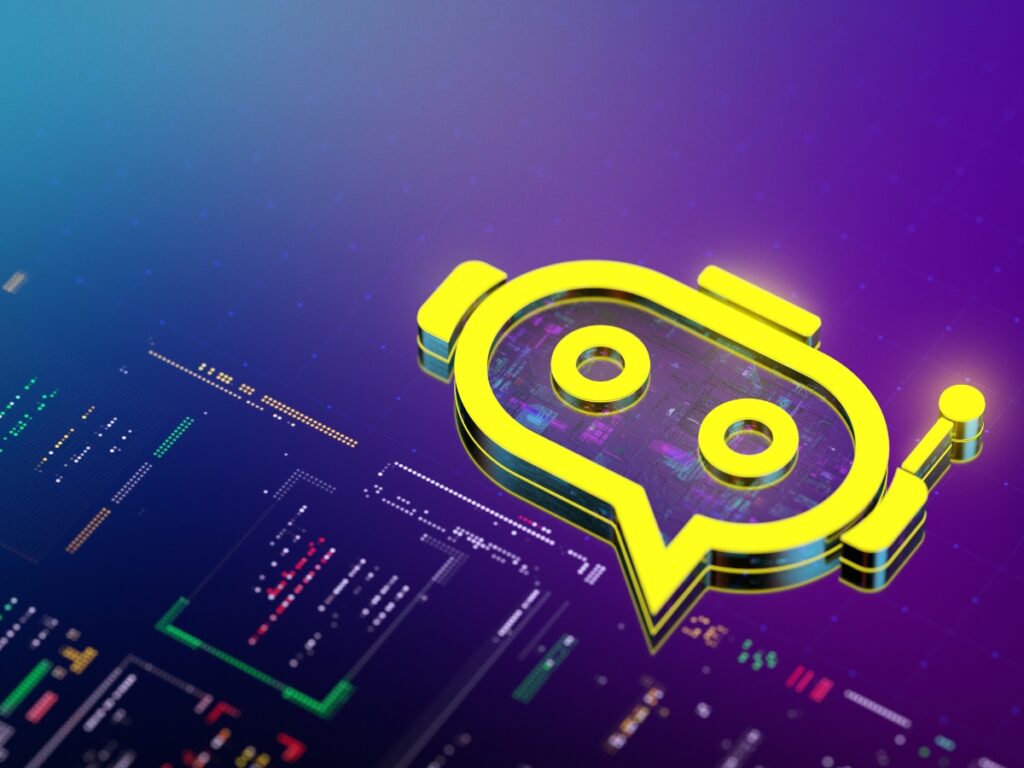
FAQ: Addressing Common Queries in Chatbot Development Services
1. “How do I ensure my chatbot understands user intent correctly?”
Answer: Ensure your chatbot has advanced Natural Language Processing (NLP) capabilities. Regularly train and update its database with varied user queries and conduct periodic testing to refine its understanding.
2. “What is the best platform for my business needs?”
Answer: The ideal platform depends on your specific needs and objectives. For quick deployments, drag-and-drop platforms like ChatterOn may be beneficial. For more advanced interactions, Meya or Wit.ai might be more appropriate. Assess your requirements, budget, and long-term goals before choosing.
3. “How can I make my chatbot more human-like?”
Answer: Integrate sentiment analysis to detect user emotions and adjust responses accordingly. Employ a conversational design strategy and use platforms like Dialogflow by Google to enhance natural language understanding.
4. “What are the data security implications of deploying chatbots?”
Answer: Chatbots store and process user data, making data security vital. Ensure encryption during data transmission, adhere to data protection regulations, and choose platforms like Azure Bot Service by Microsoft, known for robust security features.
Addressing these queries directly and transparently will clarify misconceptions and bolster chatbot development services’ trust.
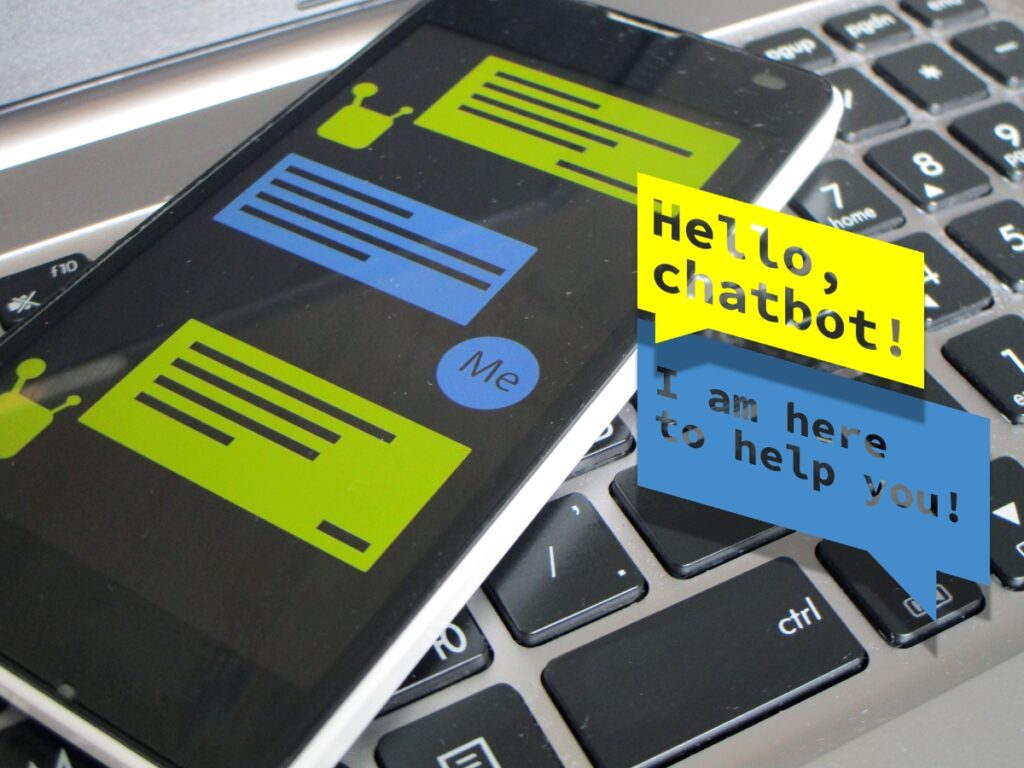
Conclusion: Maximizing ROI with Effective Chatbot Development
In today’s digital-driven business landscape, chatbot development isn’t just a trend—it’s a transformative tool reshaping how brands interact with their audience. As businesses dive into the chatbot realm, it’s essential to understand that it’s not just about creating a bot but about crafting an experience that adds value, facilitates engagement, and drives results.
By keeping users at the forefront of development, understanding their needs, and continuously refining the chatbot based on feedback and performance metrics, businesses can harness the full potential of this technology. Effective chatbot development enhances user experience and translates to tangible business benefits, significantly maximizing ROI.
As we move forward, with advancements in AI and machine learning, the capabilities and potential of chatbots will only grow, making them an indispensable asset for businesses aiming to thrive in the digital age.

You Might Also Like
If you enjoyed this article and received value from it, check out the other Blue Lane Group articles in the Best Chatbots for Customer Service: Blueprint for Success in 2023 series:
- Chatbot ROI: Unlock Unmatched Profits with Top 5 Strategies for Optimization
- Omnichannel Chatbots: Unlock Consistent Engagement with 7 Best Practices
- Chatbot KPIs: 10 Essential Metrics to Drive Optimal Results
- Multilingual Chatbots: Break Language Barriers with 8 Leading Solutions
- Enterprise AI Chatbot Solutions: 7 Key Tools to Supercharge Your Business
- Mastering Chatbot Training: 7 Strategies for Optimal User Engagement
- Chatbot APIs: 6 Leading Options for Seamless Functionality
- Chatbot Scripts: 9 Proven Strategies to Boost Conversions and Engagement
- Rule-Based Chatbots: Drive Consistent Responses with Top 9 Benefits
- Chatbot Success Metrics: Unlock Optimal Performance with Top 10 Insights
- Chatbot Analytics: Drive Excellence with 10 Essential Tools
- Mastering Interactivity: Top 10 Chatbot Frameworks Explored
- Chatbots in Retail: 7 Winning Strategies for Elevated Customer Engagement
- Chatbots for Lead Generation: 6 Best Practices to Transform Your Funnel
- Chatbot Integrations: 6 Essentials for Enhanced Productivity and Operations
- Chatbot UX: Enhance Engagement with These 8 Vital Principles
- Chatbot Security: 7 Essentials to Safeguard Your Business
- Chatbot Development Services: 7 Must-Knows to Boost Your ROI
- Chatbots in Healthcare: 6 Leading Innovations Revolutionizing Patient Care
- NLP for Chatbots: Top 6 Techniques Transforming Chat Experiences
- Benefits of Chatbots in Customer Service: 7 Key Sales Boosters
- 7 Essential Social Media Chatbots for Unmatched Engagement
- Building Chatbots Powered by AI: 5 Proven Techniques for Epic Profits



